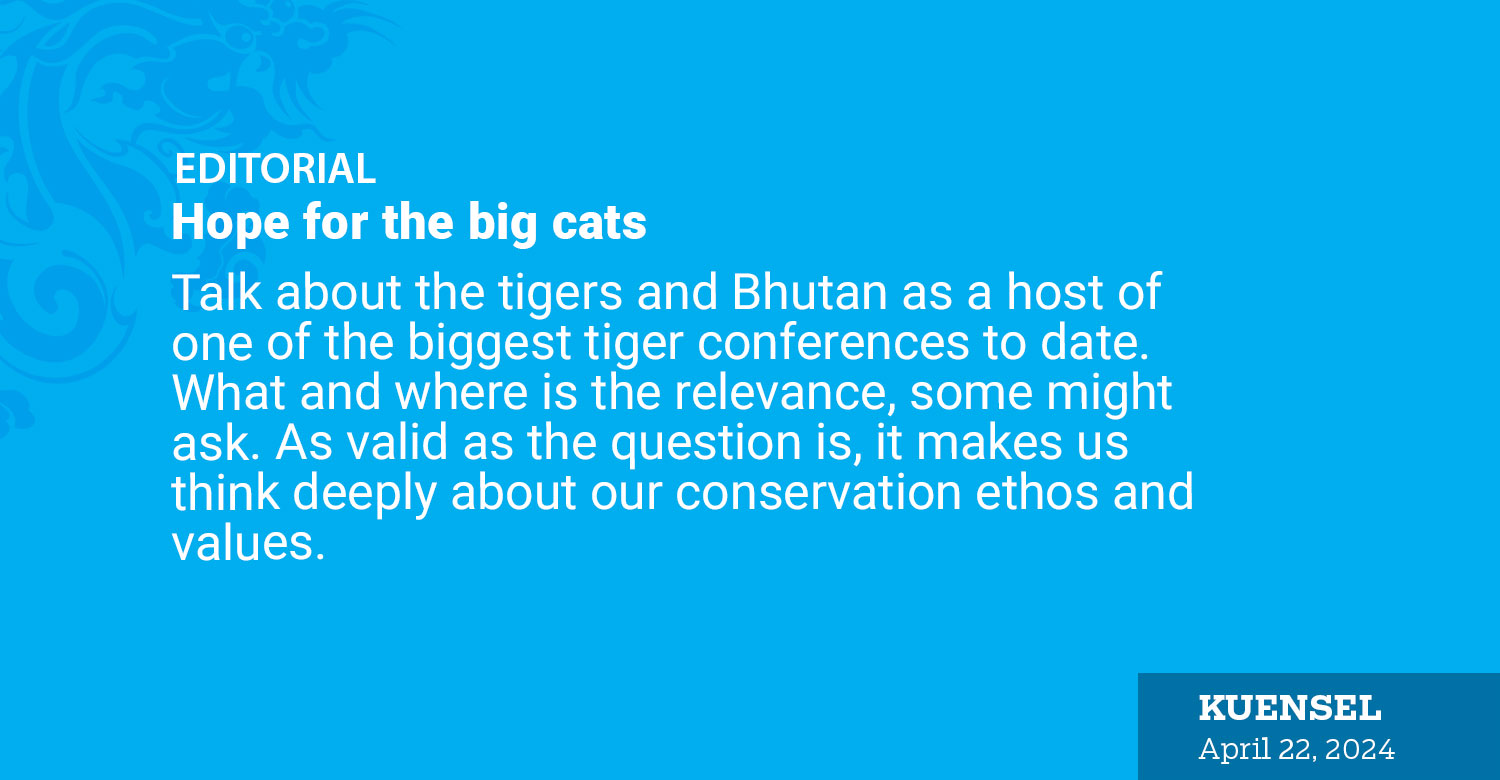Talk about the tigers and Bhutan as a host of one of the biggest tiger conferences to date.
What and where is the relevance, some might ask. As valid as the question is, it makes us think deeply about our conservation ethos and values.
As we gather for one of the most significant tiger conferences in history, in Pangbisa, Paro we stand at a pivotal moment, where collaboration and determination can pave the way for the survival of these magnificent beasts.
This backdrop of this conference is both promising and concerning. On one hand, we celebrate a remarkable achievement—a 60 percent increase in the overall tiger population the world over. This success speaks about dedication of conservationists, governments, and local communities across the region.
It showcases what is possible when people and governments unite in a common cause.
However, alongside this triumph lies a sobering reality.
Habitat loss and biodiversity decline threaten the very existence of tigers in Southeast Asia. As forests vanish and prey populations dwindle, these apex predators face an uncertain future.
The urgency of this situation cannot be overstated; if we do not act decisively now, we risk losing these iconic animals forever.
Against this backdrop, the Tiger Conference takes on profound significance. It serves as a rallying cry for renewed commitment and concerted action.
Here, representatives from governments, conservation organisations, and local communities converge to chart a course for the protection and restoration of tiger habitats. We hope something worthwhile comes out of the conference.
At the heart of this conference lies the recognition of the interconnectedness of all life. Tigers are not just charismatic symbols; they are indicators of the health of our ecosystems. By safeguarding their habitats, we also protect countless other species and ensure the well-being of future generations.
The conference agenda is ambitious and pragmatic. It seeks to address the root causes of habitat loss, including deforestation, infrastructure development, and human-wildlife conflict.
Through innovative strategies and collaborative partnerships, we must create corridors of connectivity where tigers can roam freely and thrive.
Undoubtedly, the conference will emphasise the importance of involving local communities in conservation efforts. Their intimate knowledge of the land and deep-rooted connection to nature make them invaluable allies in our quest to save the tigers. By empowering them with resources and support, we can foster a sense of stewardship that transcends generations.
This is more relevant to Bhutan than anywhere.
Known for its pioneering approach to conservation through policies such as Gross National Happiness, Bhutan stands as an example of what is possible when nature is placed at the center of development.
The stakes could not be higher, but so too is the opportunity for transformative change. For the entire web of life that sustains us all, we must act now.


